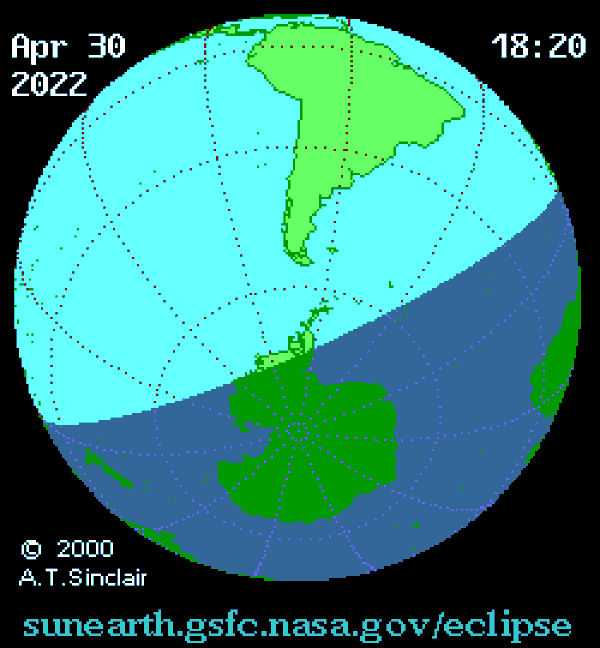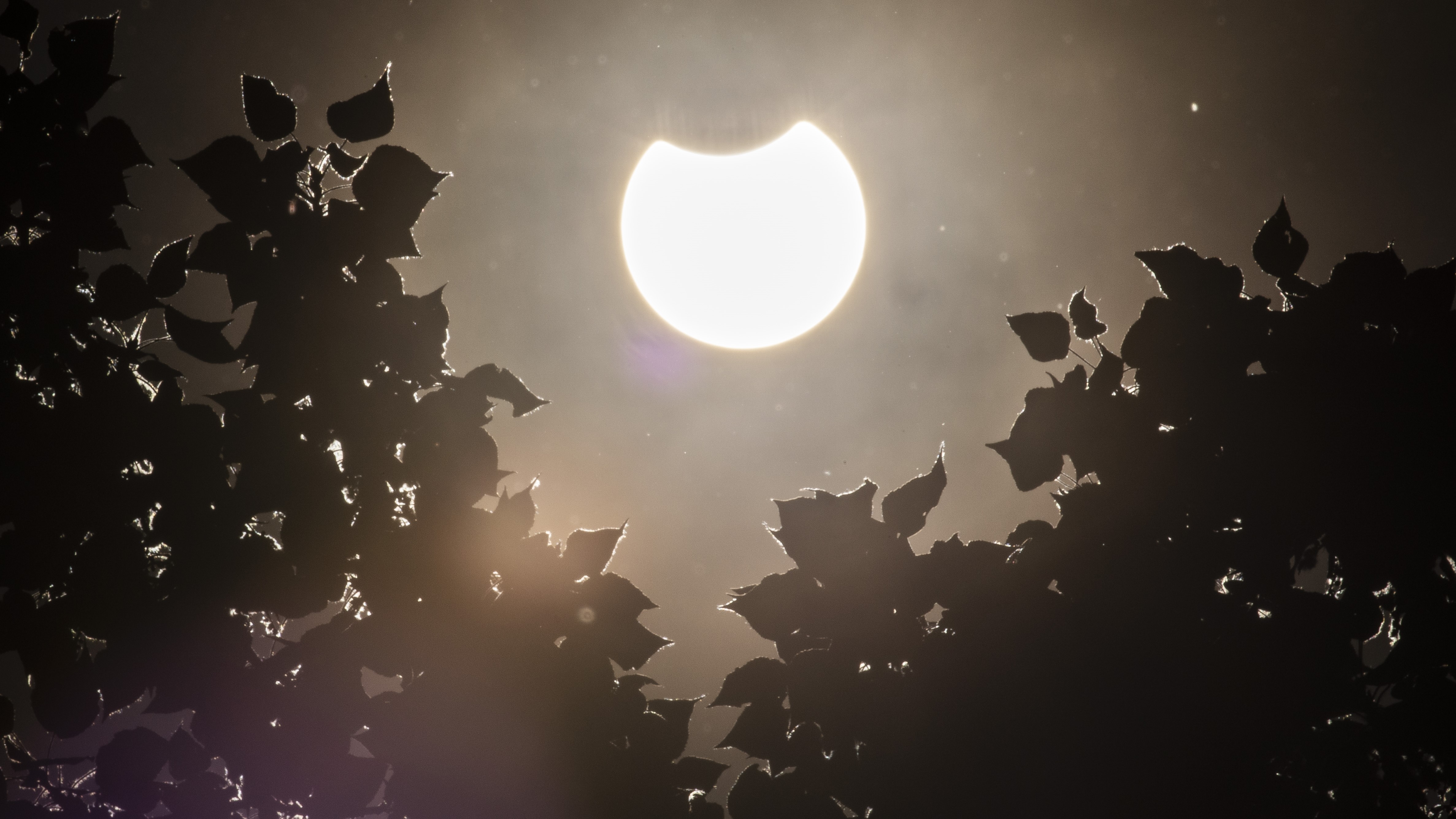The first solar eclipse of 2022 occurs today! What time does it begin?
Here's what you need to know about today's partial solar eclipse.
Update for 6:14 pm ET: TimeandDate.com's webcast for the partial solar eclipse of April 30, 2022 from Chile and Argentina has ended as the sun has set during mid-eclipse. Check out the amazing views from the video above. Read our full wrap story on the solar eclipse.
A partial solar eclipse occurs today (April 30) over parts of South America, Antarctica and the Pacific and Atlantic oceans. Here's what skywatchers can expect.
The solar eclipse will begin at 2:45 p.m. EDT (1845 GMT), when it will first be visible to skywatchers in the far southeastern Pacific near the coast of Antarctica. The maximum eclipse will happen a couple of hours later, at 4:41 p.m. EDT (2041 GMT), before the ending at 6:37 p.m. EDT (2237 GMT), according to Timeanddate.com.
You can watch the partial solar eclipse of April 30 beginning at 3:30 p.m. EDT (1930 GMT) in the window above, courtesy of Timeanddate.com, or directly on their website, where they are also live-blogging the event.
Related: How to watch the April 2022 solar eclipse online
Today's eclipse is the first of two partial eclipses to occur in 2022. The next will take place on Oct. 25, when the moon will block a portion of the sun for viewers in Europe, western Asia and northeast Africa.
You can prepare for the next solar eclipse with our guide on how to photograph a solar eclipse safely. If you need camera gear, our guides on the best cameras for astrophotography and the best lenses for astrophotography can help you in your search.
Breaking space news, the latest updates on rocket launches, skywatching events and more!
A solar eclipse occurs when the moon passes between Earth and the sun. Today's celestial event is a partial eclipse, meaning the moon will only partly obscure the sun for some viewers on Earth, giving the sun a crescent shape.
However, the portion of the sun blocked by the moon varies depending on the viewer's location. Today, a maximum of 64% of the sun's disk will be obscured by the moon for viewers just south of the southern tip of South America, according to NASA.
Unfortunately, today's eclipse will only be visible from sparsely-populated areas in the southeastern Pacific Ocean, the Antarctic and some South America countries, such as Chile, Argentina, Uruguay, Bolivia and Peru.
For viewers located within the eclipse's path, it's important to wear special protective eyewear or certified eclipse glasses in order to safely observe the sun — especially during a partial eclipse when much of the sun is still visible. Never look at the sun directly with your eyes or use the wrong gear, as this can burn your retinas and cause irreparable damage to your eyes.
Editor's Note: If you snap an amazing solar eclipse photo and would like to share it with Space.com's readers, send your photo(s), comments, and your name and location to spacephotos@space.com.
Follow Samantha Mathewson @Sam_Ashley13. Follow us on Twitter @Spacedotcom and on Facebook.

Samantha Mathewson joined Space.com as an intern in the summer of 2016. She received a B.A. in Journalism and Environmental Science at the University of New Haven, in Connecticut. Previously, her work has been published in Nature World News. When not writing or reading about science, Samantha enjoys traveling to new places and taking photos! You can follow her on Twitter @Sam_Ashley13.



